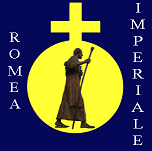Stage 21
Prato-Firenze
The main denominator of this stage is history. In fact, we are on the route of the Via Cassia, one of the most important Roman consular roads, built on the previous Etruscan road system: for more than 2,200 years we have been walking on these territories, which saw the birth of the history of Italy. The reference to Roman times is highlighted by the place names of the towns crossed: Settimello, Sesto, Quinto, etc., evocative of the distance in miles from the capital Florence. Shortly after Prato, between comfortable paths and dry stone walls, we overcome slight elevation changes and arrive at the “Cementizia,” a factory from the last century, which stands out with its four chimneys halfway up the hillside, a fine example of industrial archaeology. In the background, the plain opens grandly onto territories that are now densely populated and full of industries of primary international importance. It then climbs to Calenzano, enclosed by ancient walls that preserve evocative gates, the beautiful crenelated tower and a mansion with a glorious past, where the Museo del Figurino Storico is housed. The next stretch runs through characteristic Tuscan olive groves, mostly on easy and totally safe dirt paths, over hills dotted with castles and bell towers, Renaissance villas and monasteries, and Etruscan necropolis, to the ancient village of Querceto, with the ancient church of San Jacopo, where a “Miraculous Christ” is preserved. After passing other Medici villas, including the Villa Reale di Castello, now the seat of the Accademia della Crusca, from the hill of Careggi we arrive at the gates of Florence, on which it is useless to dwell with summary descriptions, since it is one of the most beautiful cities in the world.
Distance : 27,8 Km
Time : 7,5 ore
Terrain: trails, country roads, two historic centers
Height difference + : 577 m
Height difference – : 596 m
Max altitude : 183 m
Min altitude : 49 m
